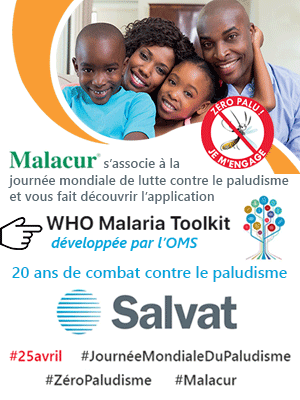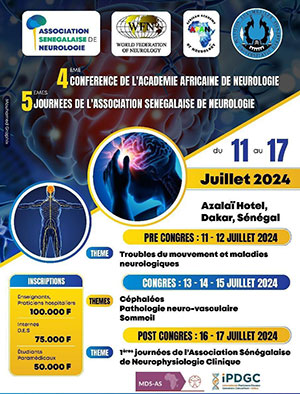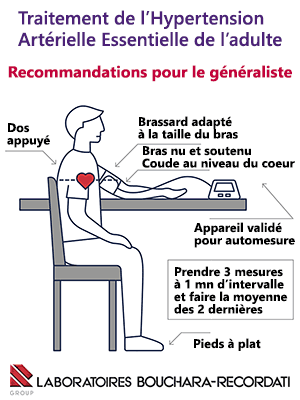Accès aux sites pays ![]()
![]() BENIN
BENIN![]() BURKINA FASO
BURKINA FASO![]() CAMEROUN
CAMEROUN![]() CENTRAFRIQUE
CENTRAFRIQUE![]() CONGO
CONGO![]() COTE D'IVOIRE
COTE D'IVOIRE![]() GABON
GABON
![]() GUINEE
GUINEE![]() MADAGASCAR
MADAGASCAR![]() MALI
MALI![]() R.D. CONGO
R.D. CONGO![]() SENEGAL
SENEGAL![]() TOGO
TOGO
Accès aux sites pays ![]()
![]() BENIN
BENIN![]() BURKINA FASO
BURKINA FASO![]() CAMEROUN
CAMEROUN![]() CENTRAFRIQUE
CENTRAFRIQUE![]() CONGO
CONGO![]() COTE D'IVOIRE
COTE D'IVOIRE![]() GABON
GABON
![]() GUINEE
GUINEE![]() MADAGASCAR
MADAGASCAR![]() MALI
MALI![]() R.D. CONGO
R.D. CONGO![]() SENEGAL
SENEGAL![]() TOGO
TOGO

Publié dans Médecine d'Afrique Noire 7006 - Juin 2023 - pages 339-347
 Malformation de Dandy-Walker au Niger. Aspects épidémiologiques, cliniques, paracliniques, thérapeutiques et pronostiques. A propos de 162 cas sur une période de 10 ans
Malformation de Dandy-Walker au Niger. Aspects épidémiologiques, cliniques, paracliniques, thérapeutiques et pronostiques. A propos de 162 cas sur une période de 10 ansAuteurs : A. Hima-Maiga, I. Sarki, M.N. Seck, J. Abdourahmane Soli, H.C. Sode, J.S. Dzuguem, A. Tankari, I.A. Idriss, H.S. Stachys, N.A. Habi, I.A. Rachida, S. Brice, I.H. Ousmane, A.B. Kelani - Niger
Introduction : Le Syndrome de Dandy-Walker (SDW) ou Malformation de Dandy-Walker (MDW) se définit par l’association d’une dilatation kystique du quatrième ventricule, d’une agénésie complète ou partielle du vermis et d’une hypoplasie des hémisphères cérébelleux responsables de la distension de la fosse cérébrale postérieure avec ascension de la tente du cervelet avec ou sans hydrocéphalie. L’objectif de ce travail était d’illustrer les aspects épidémiologiques, cliniques, paracliniques, thérapeutiques et pronostiques chez l’enfant à travers une étude réalisée au service de Neurochirurgie de l’hôpital national de Niamey sur une durée de 10 ans.
Matériels et méthodes : Il s’agissait d’une étude rétrospective, descriptive et analytique étalée sur une période de 10 ans allant de février 2011 à février 2021 faite au service de Neurochirurgie de l’hôpital national de Niamey au Niger. Les patients provenaient de la consultation neurochirurgicale donc de tout le pays ou avaient été adressés par d’autres services notamment les deux services de pédiatrie de l’hôpital. Il s’agissait d’un échantillon de 162 patients âgés de 0 mois à 30 mois admis pour un retard psychomoteur associé à une macrocrânie et dont la tomodensitométrie cérébrale sans injection de produit de contraste affirmait une malformation de Dandy-Walker. Etaient exclus de l’étude les patients ayant des antécédents de méningite, une mauvaise évaluation des antécédents familiaux, néonataux et du statut neurologique. Tous nos patients ont été traités chirurgicalement par la mise en place d’une dérivation ventriculo-péritonéale.
Résultats : Mille trois-cent-vingt dossiers d’hydrocéphalie avaient été enregistrés à la clinique neurochirurgicale de l’hôpital national de Niamey durant la même période, la malformation de Dandy-Walker ne représentait que 8,14%. L’âge moyen de nos patients était de 19,8 mois avec des extrêmes allant de 0 mois à 13 ans. Cette distribution montrait un pic de fréquence pour les nourrissons de moins de 1 an avec 60,15%. Les circonstances de découverte et motifs de consultation étaient représentés par la macrocranie dans 43% des cas suivi d’un retard du développement psychomoteur dans 29%. Chez 130 de nos patients soit 80,24% les signes fonctionnels étaient constitués par les vomissements. Chez 146 patients soit 90,12% l’état général avait été jugé bon. L’échographie trans-fontanellaire avait été pratiquée chez seulement 25 de nos enfants. La moitié de nos femmes avait reçu une échographie obstétricale, mettant en évidence l’hydrocéphalie tétra-ventriculaire sans suspicion de la malformation de Dandy-Walker. Aucun patient n’avait bénéficié d’un examen d’IRM, très onéreux. La malformation de Dandy-Walker vrai avait constitué 82% et la variante de Dandy-Walker 18%. Les facteurs étiologiques étaient constitués chez 54 patients soit 1/3 de notion de consanguinité. Tous nos patients ont été opérés chirurgicalement. Deux techniques chirurgicales avaient été effectuées : la dérivation ventriculo-péritonéale dans la presque totalité des cas : 157cas et la résection du kyste à ciel ouvert dans 5 cas.Le délai de la prise en charge qui est la période s’écoulant du diagnostic à la prise en charge chirurgicale avait été de 3 à 45 jours avec une moyenne de 26 jours. La durée moyenne d’hospitalisation est de 7 jours avec des extrêmes de 3 à 52 jours. Les suites opératoires avaient été favorables dans la majorité des cas. L’évolution clinique et le pronostic sont évalués chez 110 cas seulement. Ils ont été revus en consultation trois mois après. Le pronostic était bon.
Conclusion : Le Syndrome de Dandy-Walker est une origine relativement rare de l’hydrocéphalie et peut accompagner de nombreuses anomalies héréditaires du système nerveux central et systémique comme l’a montré notre étude. Même si, habituellement traitée pour une hydrocéphalie associée, l’anomalie ne provoque aucun syndrome clinique détectable.
Introduction: Dandy-Walker Syndrome (DWS) or Dandy-Walker Malformation (DWM) is defined as: ‘the association of cystic dilation of the fourth ventricle, complete or partial agenesis of the vermis and hypoplasia of the cerebellar hemispheres responsible for distension of the posterior cerebral fossa with ascent of the tentorium of the cerebellum with or without hydrocephalus. The goal of this work was to illustrate the epidemiological, clinical, paraclinical, therapeutic and prognostic aspects in children through a study carried out in the Neurosurgery department of the Niamey National Hospital over a period of 10 years.
Materials and methods: This is a retrospective, descriptive and analytical study spread over a period of 10 years from February 2011 to February 2021 carried out in the Neurosurgery department of the National Hospital of Niamey in Niger. The patients came on one hand, from the countryside neurosurgical consultations centers, on the other hand, from other departments of Niamey National Hospital, namely its two pediatric departments. The study analyses a sample of 162 patients aged from 0 to 30 months admitted for psychomotor retardation associated with macro crania and whose brain scan, without injection of contrast medium, confirmed Dandy-Walker Malformation. Were excluded from the study, patients with a history of meningitis, poor assessment of family history, neonatal history, and neurological status. The treatment was ventriculoperitoneal shunt.
Results: One thousand and three hundred and twenty (1320) files of hydrocephalus had been registered at the neurosurgical clinic of Niamey National Hospital during the same period out of which the Dandy-Walker Malformation represented only 8.14%. The average age of our patients was 19.8 months with extremes ranging from 0 month to 13 years. This distribution showed a peak frequency for infants under 1 year with 60.15%. The circumstances of discovery and reasons for consultation were represented by macro crania in 43% of cases followed by delayed psychomotor development in 29%. In 130 of our patients, or 80.24%, the functional signs consisted of vomiting. In 146 patients or 90.12% the general condition was considered good. Trans-fontanel ultrasound had been performed in only 25 of our women. Half of our women had received an obstetric ultrasound, highlighting tetra ventricular hydrocephalus without suspicion of Dandy-Walker Malformation. CT, in the absence of MRI, was the radiological examination of choice. No patient benefited from very expensive MRI. The true Dandy-Walker Malformation constituted 82% and the Dandy-Walker variant 18%. The etiological factors were established in 54 patients, or 1/3 of the notion of consanguinity. Surgical treatment was performed in all 162 patients, or 100%. Two surgical techniques were performed: ventriculoperitoneal in almost all the 157 cases and cystic resection in 5 cases. The management time, which is the period from diagnosis to surgical management, was 3 to 45 days with an average of 26 days. The average duration of hospitalization is 7 days with extremes from 3 to 52 days. The consequences had been favorable in the majority of cases. The evolution and prognosis were as follow: only 110 came back for consultation 3 months later out of the 162 patients operated on. The prognosis was good.
Conclusion: Dandy-Walker Syndrome is a relatively rare origin of hydrocephalus and may accompany many inherited central nervous system and systemic abnormalities as shown in our study. Although, usually treated as associated hydrocephalus, the anomaly causes no detectable clinical syndrome.
Cet article est actuellement coté ![]() (2,8 étoiles) par les abonnés de Médecine d'Afrique Noire.
(2,8 étoiles) par les abonnés de Médecine d'Afrique Noire.
Il a été consulté 2130 fois, téléchargé 18 fois et évalué 8 fois.
Aucun commentaire n'a encore été ajouté à propos de cet article
 Obtenir l'article intégral en PDF
Obtenir l'article intégral en PDF
Plus de résumés d'articles - Plus d'articles en texte intégral
Restez informés : recevez, chaque mercredi, la lettre d'informations de Santé tropicale. Inscriptions
Ce contenu gratuit vous est destiné :








![]() Adresse
Adresse
![]() Téléphone
Téléphone
![]() Contactez-nous
Contactez-nous
Actualités
Articles médicaux